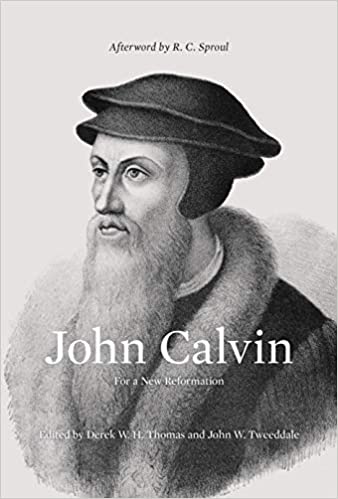A Book Review from Books At a Glance
By Gary Steward
More evangelicals need to read John Calvin. But where should they begin? How can a newcomer to Calvin most easily enter into the world of his life, ministry, and thought? Derek Thomas and John Tweeddale have put together a collection of writings by pastors and sympathetic Calvin scholars to help. This handsome volume maps out the terrain of Calvin’s life and theology in a very satisfying way that will bring readers into Calvin’s historical and theological world. It presents a very substantial summary and overview of Calvin that is both suitable for newcomers and yet useful for Calvin scholars as well.
The editors state that they have drawn together “leading Reformed pastors and scholars” to “reflect on the significance of the ministry and life of John Calvin for the church today” (9). Twenty different scholars have contributed to this volume, making it a theological treat. The work covers a large amount of material. First, introductory chapters written by Michael Haykin and Stephen Nichols are biographical in nature, giving an overview of Calvin’s spiritual and theological development and early establishment in Geneva as a reformer.
Second, there are five chapters which serve as “case studies from Calvin’s life and ministry” (10). These chapters discuss Calvin’s life as a minister and theologian. Calvin’s approach and work as a pastor, preacher, reformer, and theologian are all addressed.
The remaining thirteen chapters outline the contours of Calvin’s theology of various loci of systematic theology, roughly following the order of his Institutes. These chapters bring together the teaching of his Institutes with theological material scattered throughout in his commentaries, sermons, and shorter works. Topics covered in these chapters range from creation to eschatology and a number of important topics covered in-between.
A few chapters stand out to this reviewer as being especially significant. Paul Helm’s chapter on Calvin’s doctrine of predestination challenges the popular idea that predestination dominated Calvin’s theological thought. “It was certainly not a ‘central dogma’ or an axiom from which Calvin attempted to derive the other aspects of Christian theology,” according to Helm (449-450). Helm demonstrates in his chapter how “predestination and providence interlock” in Calvin’s thought (450). He also lays out Calvin’s belief that a believer’s union with Christ and experience of the “double grace” of justification and sanctification provide a “mirror” for helping someone know whether or not they are elect and predestined to eternal life (462-464).
Joel Beeke’s chapter outlines Calvin’s doctrine of the Holy Spirit, arguing that “Calvin weaves the work of the Spirit into nearly every chapter of his Institutes as well as throughout his commentaries, sermons, and letters” (371). His doctrine of the Holy Spirit is more central to his thinking than his doctrine of predestination.
Guy Prentiss Water’s discussion of Calvin’s view of natural law (308-315) and Cornelis Venema’s overview of Calvin’s eschatology area also are very interesting (545-574). Venema notes that the popular notion of “inaugurated eschatology” is “clearly present in Calvin’s theology” (553) and asserts that Calvin regarded belief in a future millennium to be a “serious error” (565).
A very helpful feature of this book is the bibliographical essay written at the end by John Tweeddale. This essay discusses a number of Calvin’s works and other books that have been written on Calvin and his thought. For those who are trying to get into the world of Calvin and his works, this essay is a great place to start. While older controversies (e.g., the Kendell thesis) and more technical works are left out, this essay introduces readers to many of the popular and standard treatments of Calvin by evangelicals that have more recently come into print.
Reading a book like this is no substitute for actually reading Calvin himself. The editors of this book put it together with the goal that evangelicals might be encouraged to read Calvin for themselves. I share the editors’ hopes and believe that many will be encouraged to do so through this book.
Dr. Gary Steward
Colorado Christian University
